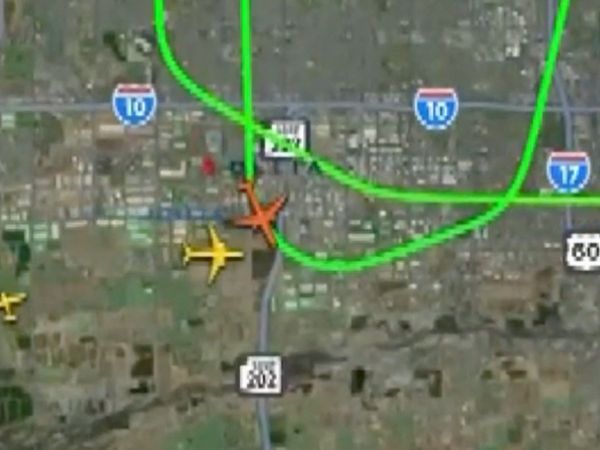
By Grady McGregor
Beijing travelers are due for an upgrade, and some new Jetson’s-esque technology.
On Wednesday, Chinese President Xi Jinping (習近平) officially inaugurated Beijing Daxing International Airport, located about 40 kilometers south of the country’s capital.
The opening comes a week before celebrations for China’s 70th anniversary, though some commercial travelers have already tested out the airport, which has been operating in a limited capacity for several days.
After almost five years of construction, the US$63 billion facility features a 7.5 million square foot terminal and sits on 18 square miles of land, making it the world’s largest airport.
The airport was designed by the Pritzker-winning architect Zaha Hadid — who died in 2016 — and is meant to resemble a phoenix, though it is more often described as a starfish or a hand.

“You have a palm and the radiant fingers; all the processing happens in the palm and the distance to the aircraft in the fingers is actually not very long,” Zaha Hadid Architects Director Cristiano Ceccato told CGTN on the airport's inaugural day. “It’s very human, it’s a very walkable terminal that you can access on a human scale, even though it is very large.”
The facility is meant to become the busiest airport in the world, aiming to take in roughly 45 million annual passengers by 2021, 72 million by 2025, and 100 million by 2040, according to the South China Morning Post.
Officials hope the airport, which will be connected to downtown Beijing via a newly built high-speed subway line, will take pressure off Beijing’s Capital Airport, which has in recent years been plagued by long delays and overcrowding. It handled over 100 million passengers in 2018, 15 million or so more than its intended capacity.
The Airport’s New Face
Officials have long promised that the new airport will be one of the most technologically advanced in the world.
Last Friday, China Eastern Airlines, China Unicom, and Huawei announced the rollout of a coordinated “5G smart travel” service system to be used in the new terminal.
Meant to “set the standard for the new generation of smart airports,” the technology will incorporate Huawei’s 5G networks, artificial intelligence, augmented reality, cloud computing, and other technologies into an integrated system for travelers, the airlines, and airport officials.

For travelers, perhaps the most noticeable technological difference will be the extent to which facial recognition is applied. Facial scans will not only be used during check-ins and security checks, they will also be a means for flight attendants to help passengers find their seats.
A Huawei press release promises that “passengers can complete all travel transactions from ticket purchase to check-in, luggage consignment, security check, and boarding just by having their faces scanned.”
Such technology represents a significant step forward in commercial- and security-oriented uses of facial recognition technology in China — uses that may be as inevitable as they are ethically questionable, as Fortune has previously reported.
China Eastern Airlines, in partnership with Delta, Air-France and other Skyteam members, plans to use the new airport to expand its operations and customer base. At least 10 domestic carriers and several foreign carriers—including American Airlines and British Airlines — have also signed on to moving operations to Daxing, while others have remained hesitant, given the costs of transferring equipment and staff to the new location.
While Beijing’s Capital Airport will remain in operation, Daxing’s opening will mean the closure of Nanyuan Airport, a nearby terminal on Beijing's south side with one commercial carrier. As Nanyuan was China’s first airport, a significant chapter in China’s aviation history is closing just as a new one opens.
READ NEXT: China's Medicinal Demands Drive Pangolins to Commercial Extinction
© 2019 Time Inc. All rights reserved. Republished from fortune.com and published with the permission of Time Inc. Reproduction in any manner in any language in whole or in part without prior written permission is prohibited.
TNL Editor: Daphne K. Lee (@thenewslensintl)
If you enjoyed this article and want to receive more story updates in your news feed, please be sure to like our Facebook page below.







